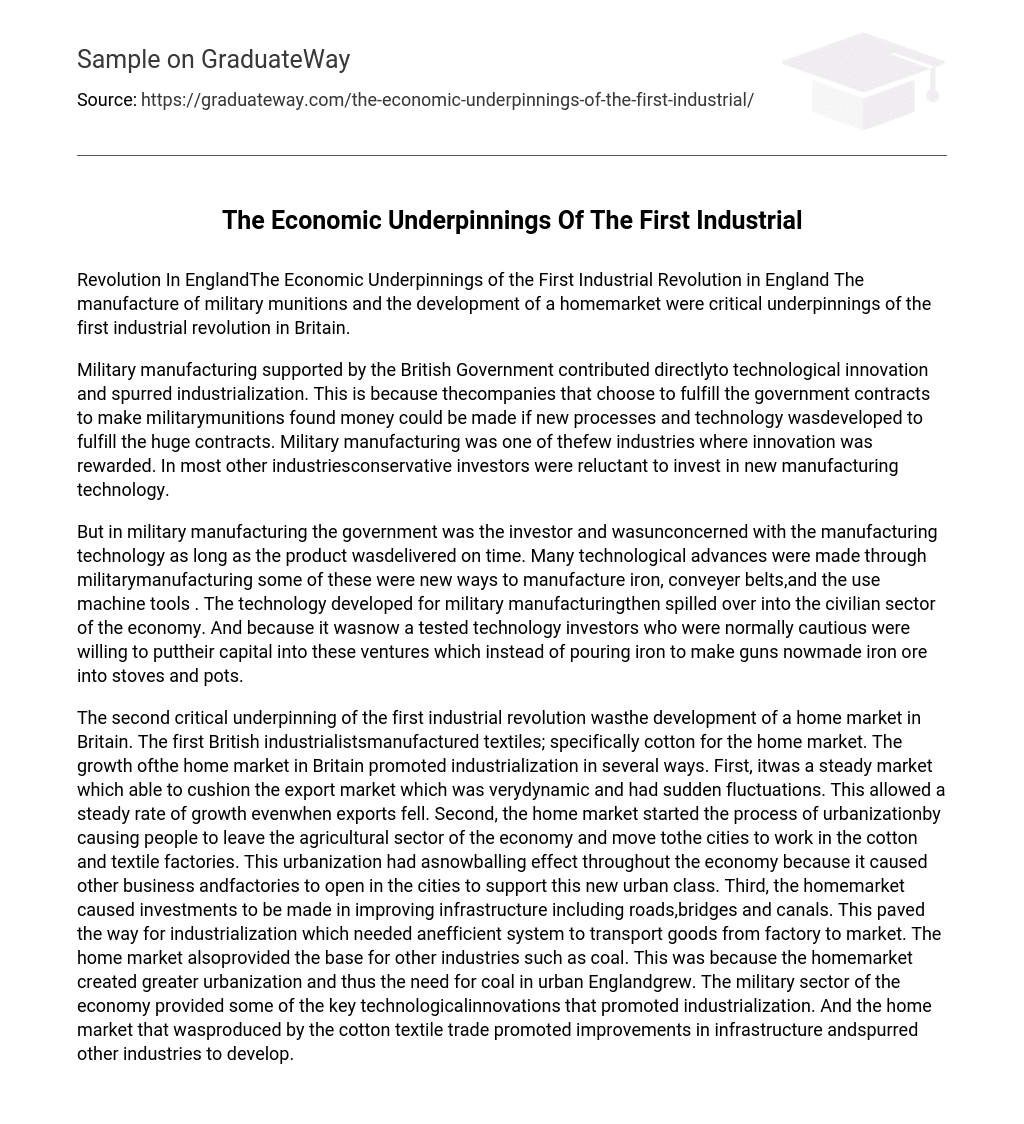The manufacture of military munitions and the development of a homemarket were critical underpinnings of the first industrial revolution in Britain. Military manufacturing supported by the British Government contributed directlyto technological innovation and spurred industrialization. This is because thecompanies that choose to fulfill the government contracts to make militarymunitions found money could be made if new processes and technology wasdeveloped to fulfill the huge contracts. Military manufacturing was one of thefew industries where innovation was rewarded. In most other industriesconservative investors were reluctant to invest in new manufacturing technology.
But in military manufacturing the government was the investor and wasunconcerned with the manufacturing technology as long as the product wasdelivered on time. Many technological advances were made through militarymanufacturing some of these were new ways to manufacture iron, conveyer belts,and the use machine tools . The technology developed for military manufacturingthen spilled over into the civilian sector of the economy. And because it wasnow a tested technology investors who were normally cautious were willing to puttheir capital into these ventures which instead of pouring iron to make guns nowmade iron ore into stoves and pots.
The second critical underpinning of the first industrial revolution wasthe development of a home market in Britain. The first British industrialistsmanufactured textiles; specifically cotton for the home market. The growth ofthe home market in Britain promoted industrialization in several ways.
First, itwas a steady market which able to cushion the export market which was verydynamic and had sudden fluctuations. This allowed a steady rate of growth evenwhen exports fell. Second, the home market started the process of urbanizationby causing people to leave the agricultural sector of the economy and move tothe cities to work in the cotton and textile factories. This urbanization had asnowballing effect throughout the economy because it caused other business andfactories to open in the cities to support this new urban class. Third, the homemarket caused investments to be made in improving infrastructure including roads,bridges and canals. This paved the way for industrialization which needed anefficient system to transport goods from factory to market.
The home market alsoprovided the base for other industries such as coal. This was because the homemarket created greater urbanization and thus the need for coal in urban Englandgrew. The military sector of the economy provided some of the key technologicalinnovations that promoted industrialization. And the home market that wasproduced by the cotton textile trade promoted improvements in infrastructure andspurred other industries to develop.





